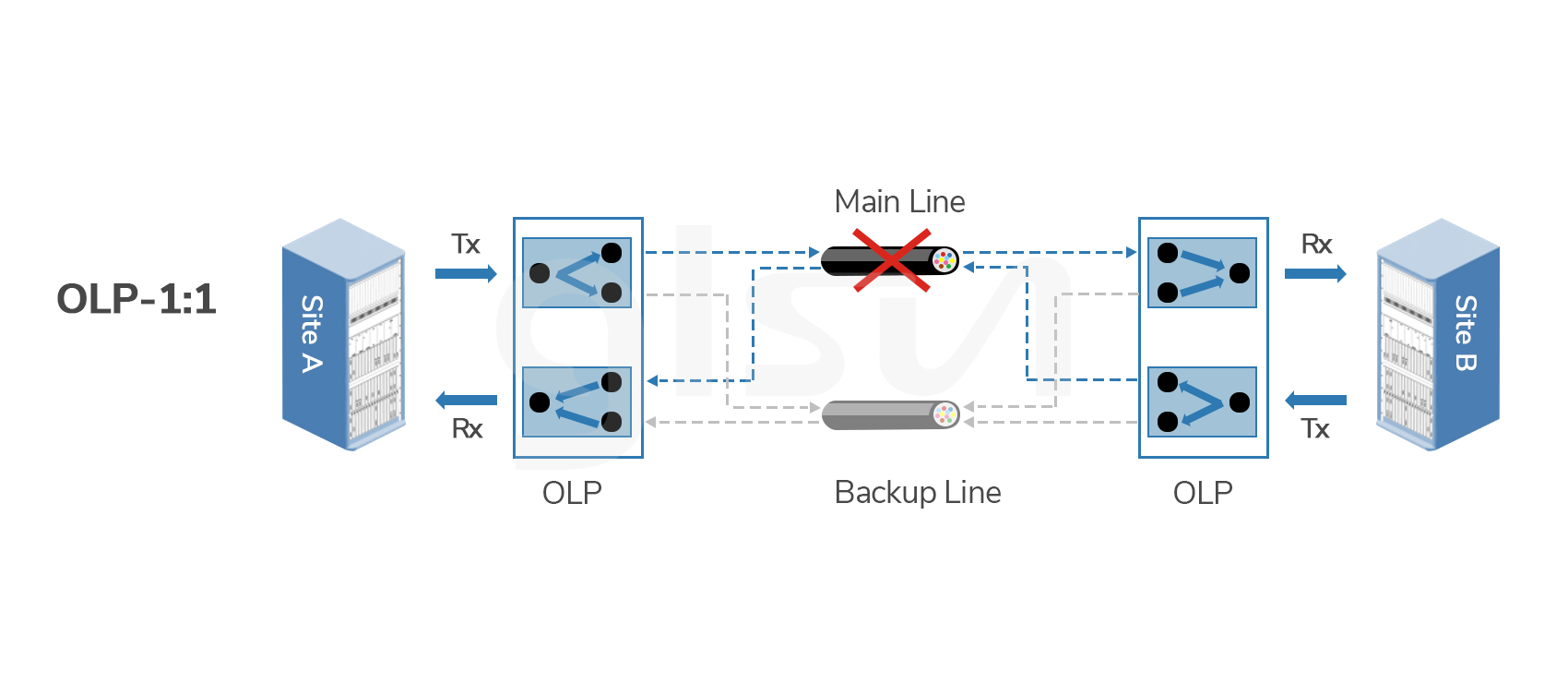Fiber Optic Tech
What's Optical Line Protection (OLP)?
Optical line protection (OLP) is a technique used in optical communication systems to prevent communication disruption caused by optical line failures. OLP technology is constantly being improved with the development of optical communication technology. OLP can be divided into two main types:
Primary-backup protection: Primary-backup protection is the most common type of OLP. It uses a primary-backup optical path. A switch is used to switch between the primary and backup optical paths. When the primary path fails, the system automatically switches to the backup path for transmission.

Ring protection: Ring protection is another common type of OLP. The primary and backup optical paths are interconnected in a ring configuration. When the primary path fails, the communication signal can be transmitted in the reverse direction over the backup path, thus ensuring communication continuity.

An OLP system typically consists of the following components:
Optical line monitor: This is used to monitor the transmission status of the optical line and send the monitoring data to the protection system.
Protection system: This uses the data sent by the optical line monitor to determine whether the optical line has failed and performs the corresponding protection operation.
Optical switch: This is used to implement the switch between the primary and backup optical paths.
OLP systems are an essential part of optical communication systems. They can effectively prevent communication disruption caused by optical line failures and improve the reliability of optical communication systems.
Benefits of OLP:
Improved reliability: OLP can help to ensure that communication is not disrupted in the event of an optical line failure.
Reduced downtime: OLP can help to reduce the amount of time that communication is disrupted in the event of an optical line failure.
Increased efficiency: OLP can help to improve the efficiency of optical communication systems by reducing the need for manual intervention in the event of an optical line failure.
OLP is a critical technology for ensuring the reliability and availability of optical communication systems.
Applications of OLP
Telecommunications networks: Telecommunications networks are the most important application area of optical communication systems. OLP is widely used in telecommunications networks to prevent communication disruption caused by optical communication link failures, such as telephone, data, and video services.
Broadcast and television transmission: Broadcast and television transmission systems also use optical communication technology. OLP is also widely used in broadcast and television transmission systems to prevent transmission disruption caused by optical communication link failures, such as program interruption.
Intelligent transportation systems: Intelligent transportation systems also use optical communication technology. OLP is also widely used in intelligent transportation systems to prevent transmission disruption caused by optical communication link failures, such as traffic information interruption.
Industrial control systems: Industrial control systems also use optical communication technology. OLP is also widely used in industrial control systems to prevent transmission disruption caused by optical communication link failures, such as industrial control system paralysis.



















